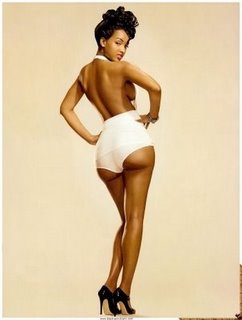Just a minute ago, my partner sat down on the couch and–seeing my ubiquitous laptop–asked, “Working on your blog?” “No,” I said, “I’m responding to a femme in need.”
I want to offer love and comfort to a femme in tears who’s afraid she’s “doing femme all wrong.” I don’t know her, but I feel like I do, because I understand her pain and confusion. I’m so deeply moved by her story, because her struggle is not only about how difficult it can be to feel at home in one’s gender, but also about the pressure all of us feel to live up to some ideal of what “femme” is. (Of course, this is true for other genders too.)
Am I really a femme if I don’t know how to send the secret femme signals? If I don’t know how to walk, or act, or flirt like a femme, even when I’m dolled up? If I don’t act “classically femme” with a butch? No matter who we are, I think we’ve all had that moment in life when we’ve felt like we were not “the real deal.” You see a world of dykes, butches, femmes or ______ (fill in the blank) who seem to know instinctively how to make all the “right” moves, and you’re heartbroken because you have no idea how to become one of those people.
Arriving at my own femme identity has taken me many, many years. In fact, it’s only been fairly recently that I have given myself permission to claim “high femme” for myself. I remember the first time someone called me high femme; she was a student of mine (a very adorable butch who went on to become a cop–so sexy!). I was flattered, but shocked. I thought, sure I’m feminine, nails, heels, makeup, whatever, but I’m not really femme enough to be “high femme.” It’s funny because that was my first year as a professor and I lectured in a black leather miniskirt and high-heeled leather boots, I kid you not! But back then I imagined “high femme” as some Promised Land of uber femininity where my nails would never chip and, if someone rang the doorbell unannounced, I’d always answer the door looking flawless. (A note to all who wish to befriend this particular femme–call first!)
So let me say this to you, Femme in Need. I could not send femme signals on the train going to work in men’s shorts and Birkenstocks, either! Like trans or genderqueer people, we femmes often cannot communicate the complexity of our gender identities to strangers passing by or in brief everyday interactions. (I’m not saying that femmes’ experiences are the same as those of transgendered people–I’m just highlighting this point of intersection.)
And please believe me, there is no “right” or “wrong” way to be femme. Embracing an identity like femme can be extremely empowering, but identities are invariably a form of constraint as well. I think we have to recognize and negotiate those constraints, to carve out our own definitions of femme that are fluid enough to accommodate our differences and complexities.
The truth is, we’re all femmes in need.
Much love to you.
xoxoxo
Filed under: Queer Femininity | Tagged: femme, gender, high femme | 5 Comments »







